Lush green pastures:
Did you know? Australia is the second largest exporter of beef.
And the fourth highest exporter of dairy.
That explains why Australia has more than 26.4 million beef cattle and 1.41 million dairy cows. That’s about one beef cattle per person and a handful of dairy cows for every residential street in Australia.
But did you also know that dairy cows in an Australian farm have a good life?
On average, they get about two-thirds of all their nutritional needs by grazing lush green pastures. The remaining shortfall is supplemented through a combination of grain, hay, silage or concentrates.
This means that most of the time, Australian dairy cows are out roaming and grazing pastures under the sun, just like how mother nature intended it to be.
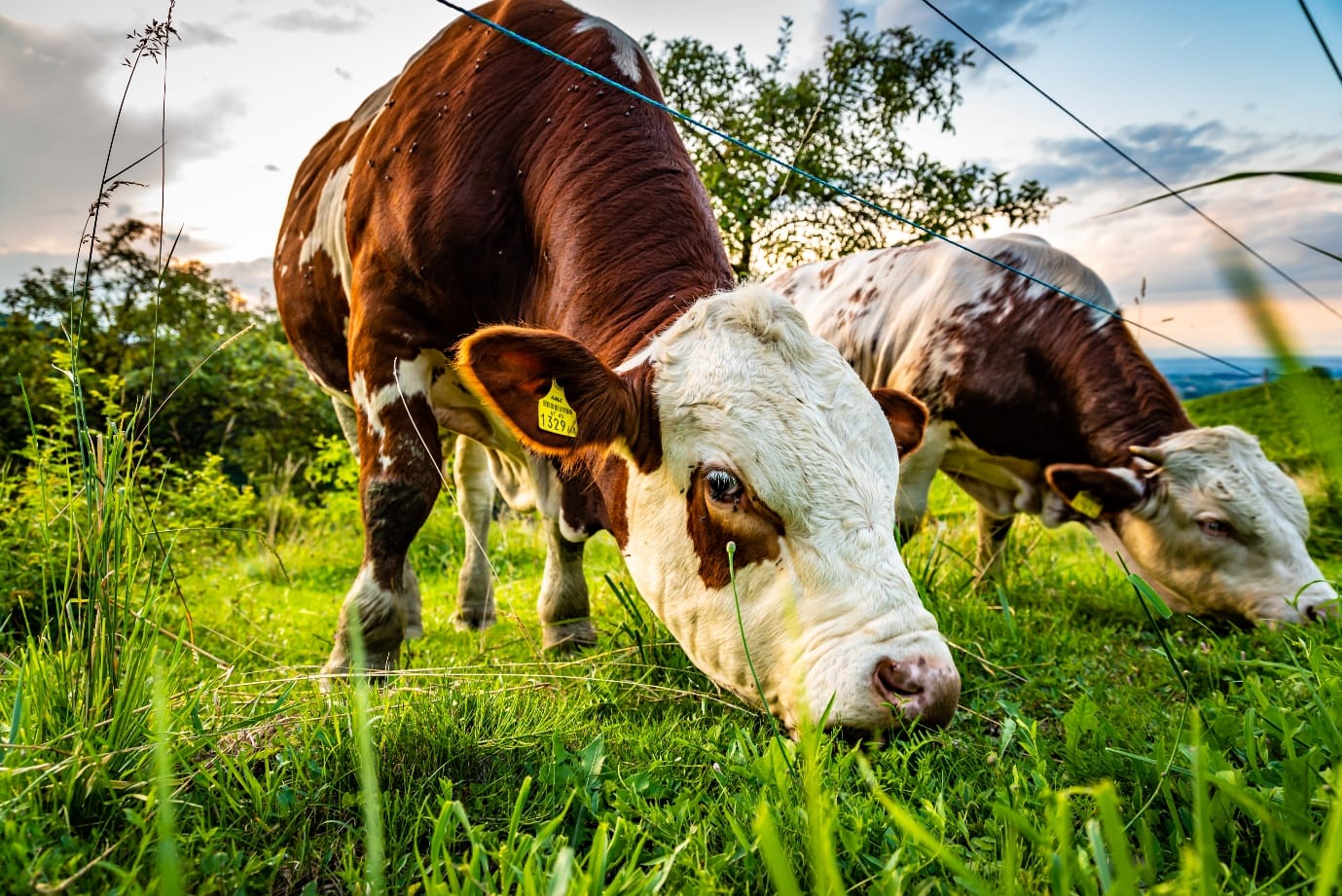
And no, they aren’t mostly stall-fed or confined to a small area indoors.
Animal welfare in Australia:
Sure, Australia is naturally blessed with abundant sunshine, good rainfall, a conducive climate and lush pastures. At the same time, animal welfare has also been a big part of the Australian society.
For example, Australia has a long legal history of advocating for animal welfare. Starting with the Prevention of Cruelty to Animals Act in 1979 and the Animal Welfare Act of 1992.
Building on these developments, as early as 2004, the Australian government began work on creating a comprehensive Australian Animal Welfare Strategy (AAWS).
Over the next ten years, the Australian state and territory governments along with industry bodies and the community further evolved this into the revised AAWS and National Implementation Plan 2010 - 2014.
This then turned into the Australian Animal Welfare Standards and Guidelines for Cattle with eleven chapters, that spoke about:
- Responsibilities
- Feed and water
- Risk management of extreme weather, natural disasters, disease, injury and predation
- Facilities and equipment
- Handling and management
- Castration, dehorning and spaying
- Breeding management
- Calf rearing systems
- Dairy management
- Beef Feedlots
- Humane killing
Each chapter offers a set of objectives, standards and detailed guidelines.
But as we all know, legal policies, laws and guidelines aren’t everything. After all it all boils down to what set of practices are implemented in each dairy farm.
Is there a way to understand how dairy farmers in Australia are adopting animal welfare practices?
Dairy Australia’s Animal Husbandry Survey:
Fortunately, Dairy Australia set out to do just that, with their Animal Husbandry Survey (AHS).
In November 2019, Dairy Australia surveyed 500 dairy farmers across all the eight dairy regions in Australia. This sample represents about 10% of Australia’s 5,500 dairy farms and were chosen randomly. So, the results can be treated as reasonably accurate.
Let’s see how Australian dairy farmers are adopting different animal welfare practices.
Biosecurity planning and practices:
As you know, biosecurity planning can help farmers prevent disease, pest and weed breakouts. According to the industry policy, every farmer must have a written biosecurity plan.
A sound biosecurity plan acts like a good defence fort, keeping out diseases, pests and weeds that can trouble dairy cows. And more importantly it also avoids large scale breakouts and epidemics.
In Dairy Australia’s 2019 survey, 58% of farmers had a written biosecurity plan for their farm.
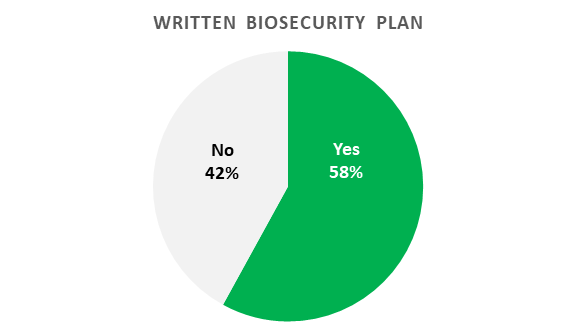
That’s good news. And we can expect that the remaining farmers will also soon begin to adopt a sound biosecurity plan for their farms. Especially, as state laws and extension support programs continue to become stronger.
Tail Docking:
No one likes to get a dirty tail smack on their face. To avoid this, in the past, many farmers dock the tails of their cattle. Tail docking made it more convenient to milk and take care of cows.
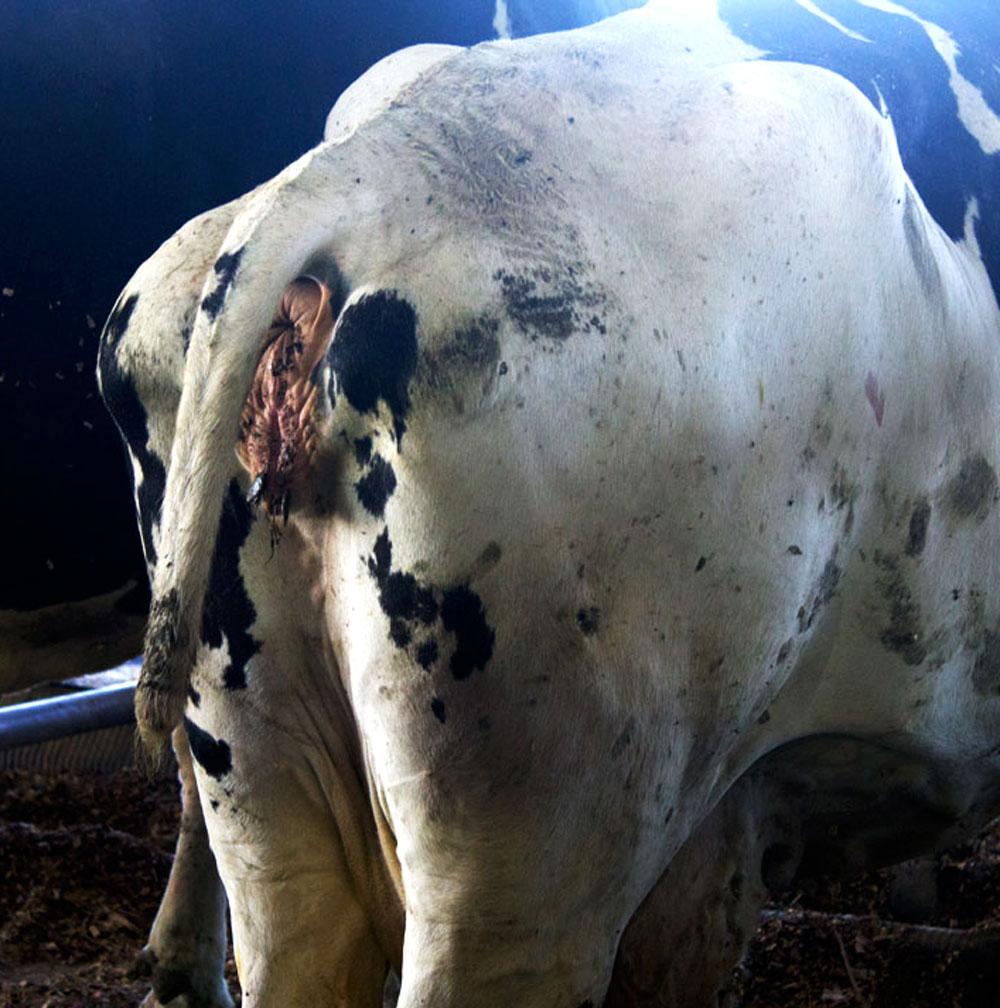
But at the same time, from the cow’s point of view, tail docking hurts a lot. And without a tail, cows can’t chase away the irritating flies. That’s why industry policy states that farmers must not dock tails anymore. Instead, they can opt to trim the cow’s tail hair once or twice a year.
The good news is that tail docking practices in Australian dairy farms are on the decline.
In 2012, 18% of farmers reported tail docking. This came down to 9% in 2016. Now in 2019, only 4% of farmers still perform tail docking. Soon we can expect tail docking to be a thing of the past.
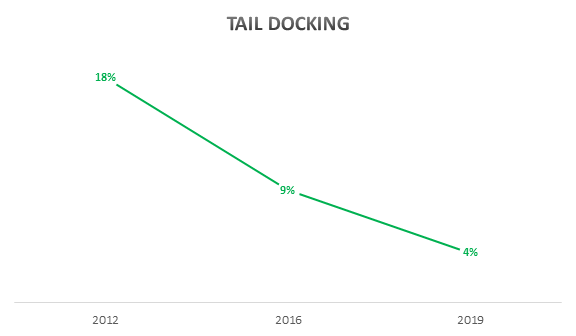
Calving Induction:
Dairy farmers may want all their dairy cows to calve within a particular window of time. So, they use a drug to initiate delivery even before the natural delivery date. This is known as calving induction.
Sometimes, farmers perform emergency calving induction to save animals from a delivery problem. Otherwise, they do it routinely in a particular season to optimise pasture utilization or milk production.
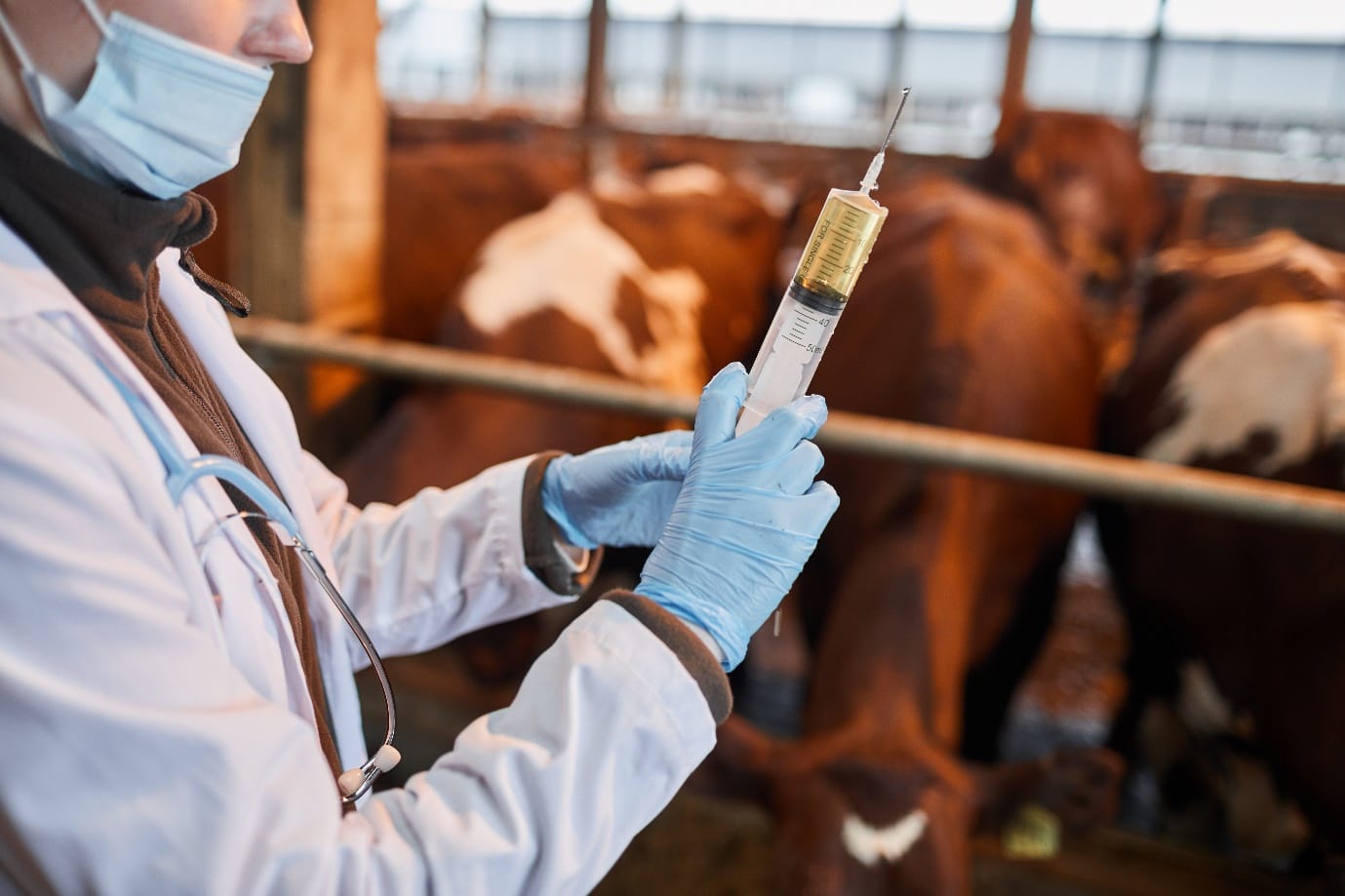
The industry sees the first scenario as a survival intervention and encourages it. However, it sees the latter as a practice that needs to be phased out by 2022.
Over the last eight years, farmers have responded well to this mandate of phasing out calving induction by 2022. Calving induction rates have reduced from 9% in 2012 to 5% in 2019.
Over the next couple of years, we can expect even this small percentage of farmers to fully get rid of this practice.
Here’s what one of our clients, Stuart Burr, a Tasmanian dairy farmer had to say about induced calving:
“Inducing calving is a waste. You waste an opportunity to have a calf.”
- Stuart Burr, Tasmanian Dairy Farmer and customer of pasture.io
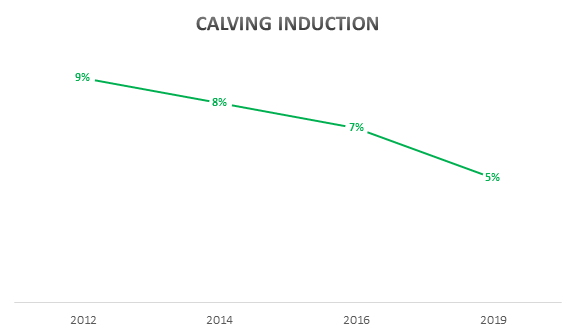
Colostrum management:
New born calves need all the colostrum they can get, especially in the first 24 hours. Because colostrum has all the antibodies that calves need to fight away infections.
But some cows don’t produce enough quantity or quality of colostrum. Or in a few cases, even if they do produce enough colostrum, their maternal instincts may not be strong enough to nurture the young calves well enough.

Either ways, the calves that don’t get enough quality colostrum are more susceptible to infections. This condition is termed as failure to transfer passive immunity (FTP).
Luckily, Australian dairy farmers are now well informed about this. That’s why three-fourths of dairy farmers now ensure that new born calves get additional colostrum.
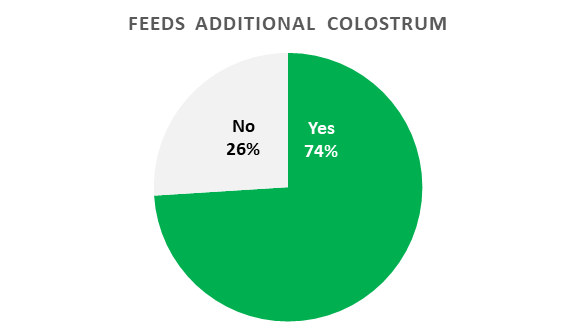
Disbudding or horn removal:
Horns on dairy cows can be dangerous to both humans and other animals. That’s why most farmers remove the horns on their cows. This is called disbudding. Disbudding calves early with the help of pain relief measures can significantly lower the pain.

That’s why industry policy maintains that calves should be disbudded under two months of age. And that pain relief should be provided immediately to the disbudded calves.
The recent Dairy Australia survey shows that 72% of calves were disbudded under two months of age. And about 74% of them received pain relief in the form of spray gel, local anesthetics, sedatives and other means. However, about 24% of them didn’t receive any pain relief measures.
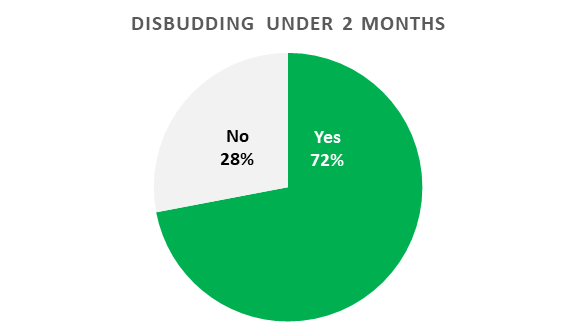
Lameness:
After fertility and mastitis, lameness is considered to be an important problem that affects dairy herds. It is estimated that one-quarter of all dairy cow’s experience lameness at any given time.
But lameness is under much better control in Australian dairy farms. This might be because farmers are able to detect lameness symptoms earlier, especially because cows need to walk to and graze on open pastures.
According to the latest Dairy Australia survey, 96% of Australian dairy farmers have implemented strategies to prevent lameness in their farms. Most strategies include good stock handling, pathway maintenance and early detection.
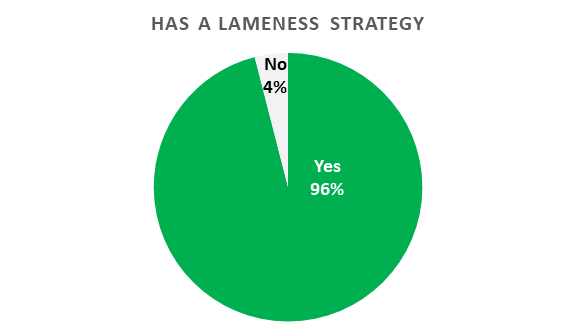
Cooling:
You should know that heat stress reduces milk production significantly, because 90% of milk is made up with water.
At the same time, climate change is causing extreme weather. This includes more frequent droughts and heatwaves in Australia.
So, keeping cows cool has become an important modern-day animal welfare practice.

According to the latest Dairy Australia survey, 96% of farmers have implemented some form of cooling mechanisms to keep the cows cool when the temperatures soar.
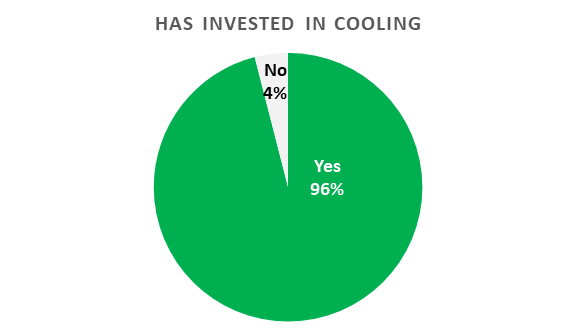
As you can see from the AHS survey results, Australian dairy farmers are both progressive and at the same time also sensitive to animal welfare needs.
A combination that demonstrates a competitive advantage as well as a the moral standards of Australian society. As a great man once said:
“The greatness of a nation and its moral progress can be judged by the way its animals are treated.” - Mahatma Gandhi
On that note, we come to the end of this article. We hope you found this useful. You can read the full AHS survey report here.
If you have any questions about this survey, you can write to Louise Sundermann, Policy Lead for Animal Health and Welfare at [email protected].
Until we meet again, happy farming.
- The Dedicated Team of Pasture.io, 2020-12-21